The Most Dangerous Window in Cybersecurity
The most dangerous time for a CIO or CISO isn’t when a breach occurs—it’s the window between discovering an exploitable weakness and verifying it’s fixed. If attackers strike during that “window of opportunity”, the board won’t ask about tooling or telemetry—they’ll ask one thing:
Why wasn’t it fixed faster?
A decade ago, security leaders could plead ignorance. Today, that excuse is off the table. Regulatory bodies, shareholders, and the SEC have established a Duty to Know expectation. Leadership is accountable not just for what they knew, but for what they should have known—and what they did about it.
Most security programs don’t fail at identifying issues—they fail at acting quickly to fix and verify remediation. Traditional pentests surface risks but often result in static reports that sit untouched. Worse, they offer only a snapshot in time, while the environment continues to change. To truly reduce exposure, organizations must shift to an operationalized pentesting model—one where each finding becomes a trigger for cross-functional action, and progress is assessed continuously to determine whether security posture is improving over time.
This shift doesn’t just reduce your attack surface—it gives you the metrics, insights, and credibility needed to communicate risk effectively to the board.

The most dangerous time for a CISO is between finding an exploitable vulnerability and remediating it.
From Static Reports to Action: The War Room Approach
Once a pentest proves a critical attack path, every second counts. The response shouldn’t be a PDF report—it should be a War Room: a focused, cross-functional initiative to understand the findings, drive remediation, verify fixes, and tune defenses.
1. Assemble the Right Stakeholders
The War Room isn’t a meeting—it’s an operational command center. It should bring together:
- SIEM Engineers – Confirm which attack paths triggered detections and which went unnoticed.
- EDR Analysts – Validate endpoint defense capabilities.
- Incident Response Leads – Rehearse containment procedures for proven attack paths.
- Network & Infrastructure Teams – Address segmentation gaps and lateral movement opportunities.
- IAM Owners – Eliminate credential weaknesses and excessive privileges.
- Patch & Application Teams – Prioritize urgent fixes and coordinate rollout.
- SOC Operators – Tune alert logic and reduce detection blind spots.
- Cloud & Data Teams – Identify at-risk assets across hybrid environments.
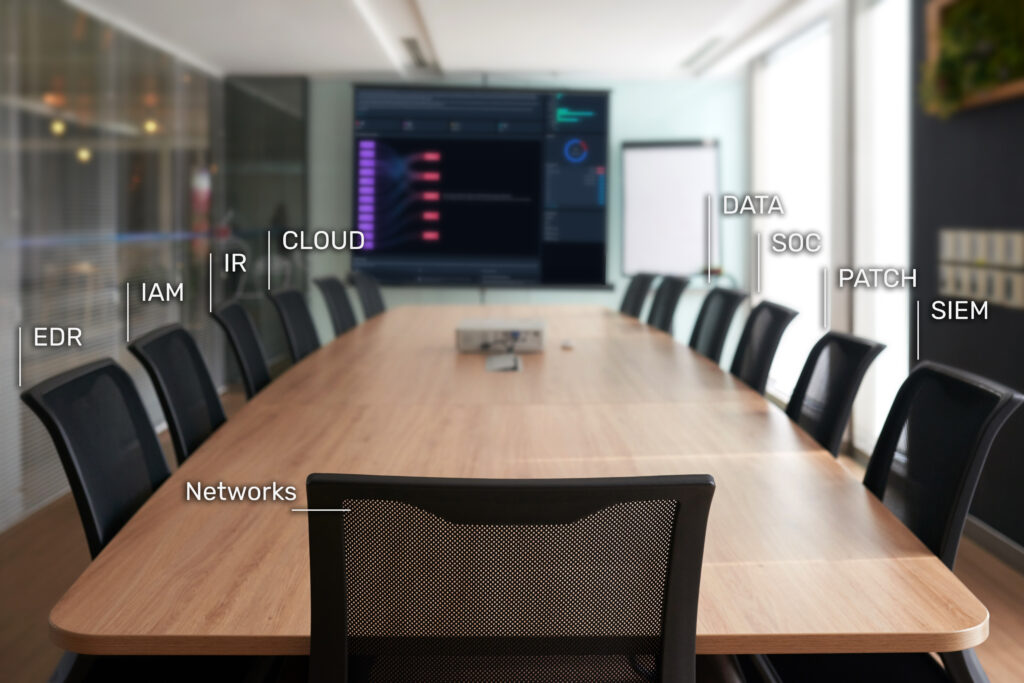
2. Deconstruct the Exploitable Attack Surface
The War Room’s job is to treat every proven attack path like it’s been exploited in the wild:
- What was detected: Did existing security controls trigger alerts on attack paths?
- What was missed: Were there silent failures in SIEM, EDR, or logging configurations?
- What’s the business impact: How severe is the risk associated with each finding?
- What are our mitigation options: Can we remediate immediately, or do we need compensating controls?
- Who owns the fix, and what’s the timeline: Can we define clear action items, owners, and timelines?
This isn’t just about fixing vulnerabilities. It’s about improving detection, reducing response time, and building institutional muscle memory.
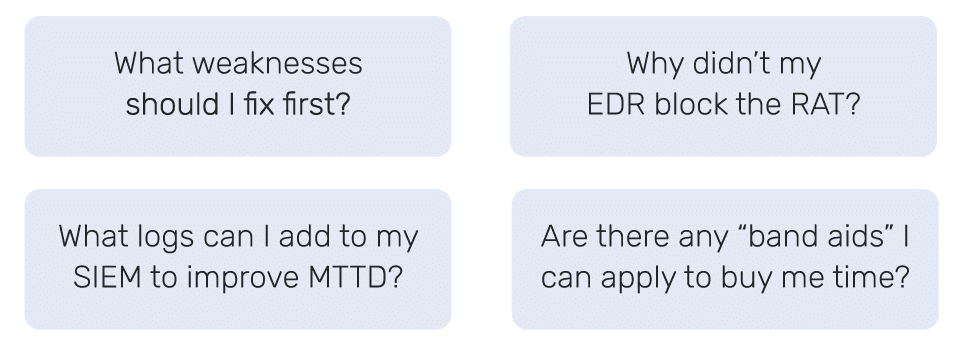

3. Deploy Honey Tokens and Validate Response Readiness
As part of your security validation efforts, honeytokens can be strategically deployed along confirmed attack paths. These decoys serve as early-warning signals—if an adversary retraces those steps during or after an engagement, alerts will trigger, but only if your security operations center (SOC) is prepared to detect and respond.
The incident response (IR) and SOC teams should ensure:
- Each honeytoken is explicitly mapped to a known attack path.
- Tabletop exercises are conducted regularly to validate containment strategies.
- Alerting pipelines are configured to surface honeytoken activity immediately within SIEM and SOAR platforms.
This proactive approach transforms the SOC from a passive monitor into an active defense function—reducing both Mean Time to Detect (MTTD) and Mean Time to Contain (MTTC).
Deploy NodeZero Tripwires
Direct Tripwires to place decoys onto specific assets.
Configure NodeZero Alerts
Send Tripwire alerts to SOC team and push to SIEM.
Build Incident Response Process
Verify internal IR processes are operational for each Tripwire.
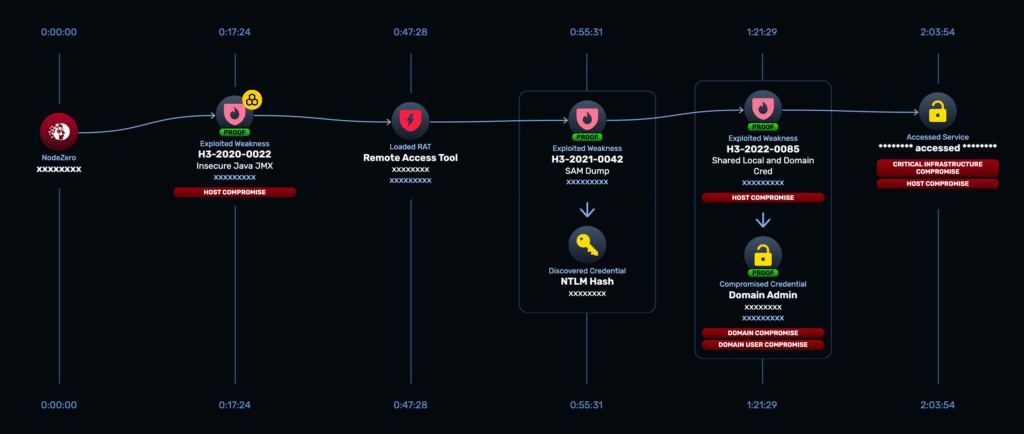
4. Fix Fast. Then Verify.
Discovery is only the beginning. What matters most is how quickly you can remediate—and prove the issue is truly resolved.
- Hold daily standups to track open issues, assign clear ownership, and identify blockers.
- Use targeted retesting tools to validate that fixes are effective in real time.
- Set service-level agreements (SLAs) that reflect the urgency of the risk: critical paths should be verified within hours, not weeks.
Validation isn’t optional—it’s the only way to ensure that remediation efforts actually reduce risk.
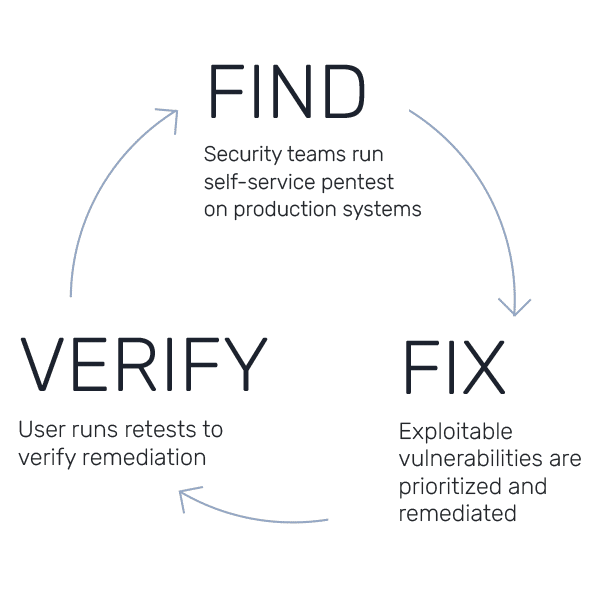
This tight loop—find, fix, verify—closes the most dangerous gap in security: the time between knowledge and action.
Peer Comparisons and Budget Justification: A Data-Driven Approach Centered on MTTR
In today’s risk-averse environment, numbers speak louder than words—especially when justifying cybersecurity investments to the board. Among the most powerful metrics is Mean Time to Repair (MTTR), which measures how quickly your organization can find, fix, and verify the remediation of exploitable weaknesses—while simultaneously confirming the effectiveness of your SOC’s detection and response capabilities.
But MTTR isn’t just an internal benchmark—it’s a competitive one.
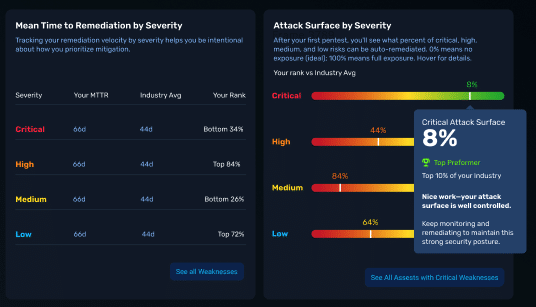
Peer comparison data shows how your MTTR stacks up against similar organizations. This lets you move beyond gut feel or vague metrics, and instead offer a data-driven, defensible case for continued investment in your people, processes, and platforms.
Our MTTR is now 40% better than the industry average. That translates into faster remediation, less exposure time, and a tangible reduction in operational risk.”
Whether you’re defending your current budget or requesting more resources, peer-based MTTR benchmarking creates a clear link between technical execution and business value. It reframes cybersecurity as an area of measured performance improvement, not just expense.
Using MTTR to Justify, Communicate, and Prove
1. Justify Investment
When paired with peer data, MTTR becomes a board-ready metric.
We reduced MTTR by 60% over two quarters. That means faster remediation, tighter risk windows, and greater ROI on our security stack.”
2. Communicate Risk in Leadership Terms
Executives may not understand CVEs or kill chains, but they grasp time and exposure.
We’re now mitigating exploitable issues 40% faster than our peers—giving us a clear operational advantage.”
3. Prove Progress Over Time
MTTR provides a measurable way to track security maturity.
Quarter over quarter, MTTR is improving. That proves our War Room model and operational investments are working.”
Boardroom Takeaways: Turning Ops Into Narrative
At the executive level, cybersecurity must be framed as a business risk—not a technical exercise. It’s the responsibility of the teams who oversee pentests to equip the CIO and CISO with clear, data-driven insights that translate security outcomes into credible board-level narratives.
Key takeaways should include:
- Exploitability Reduction
“We’ve gone from 11 critical attack paths to 3—all monitored by honey tokens now deployed.” - SOC Performance
“MTTD improved from 12 hours to 2. MTTR dropped from 4 days to 10 hours.” - Risk Ownership Transparency
“Five gaps remain. Without resourcing, they stay exploitable—and that’s a risk the board must explicitly accept or fund us to mitigate.”
These takeaways shift the conversation from technical noise to business risk management—and clarify where accountability truly sits.
Conclusion: Collapse the Gap. Own the Narrative.
Cybersecurity success depends on your ability to collapse the gap between knowing and doing.
By operationalizing pentest findings through a War Room model, organizations can:
- Shrink their exploitable attack surface
- Tune SOC detections and incident response
- Prove real-world improvements in MTTD and MTTR
- Communicate a credible risk narrative to leadership
This is what separates mature security programs from those that fail under scrutiny.
It’s not about whether you test. It’s about how fast you act on the results.
That’s the new standard. That’s what leadership expects.
Note to reader:
Many of the images in this paper come from Horizon3.ai’s NodeZero® Platform, NodeZero Tripwires™, and NodeZero Insights™.

